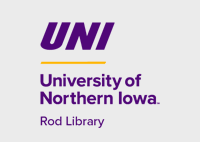Graduate Research Papers
Availability
Open Access Graduate Research Paper
Abstract
The question the researcher wished to answer in this study was in which teaching method, discovery through manipulative or traditional textbook, could student's best learn the concepts of electricity and magnetism?
The manipulative teaching method seems to be conductive in science classrooms since it allows students to experiment with how and why things happen. This provides them with the opportunity to become better problem solvers. Through this method of teaching, students apply their knowledge to working concept of circuits, polarity in magnetism, flow of electrons and electromagnets to create a working motor. This group will be taught these concepts through class discussion, taking class notes, completing worksheets from purchased materials and completing labs from the kit Batteries and Bulbs. This group will be refereed to as Group A.
The control group will be refereed to as Group B. This group was taught the same concepts as in Group A, but the teaching method was centered around a traditional textbook. These students will read sections from the textbook, complete study guides, which accompanied the textbook, took class notes and completed a variety of activities suggested from the textbook and teacher guide.
Both groups at the conclusion of the electricity and magnetism units will work in teams and assemble a CX Motor car. The teams will work through an eight step procedure which allows them to better understand how electric current and magnet fields work together to operate a motor. On completion of the car's assembly, each student will complete the performance assessment from the district's Standard number six "Understanding structures changes and properties of matter'' and Benchmark number one "Know how magnetic forces are closely related to electric forces. (Appendix 1)
Year of Submission
2001
Degree Name
Master of Science
Department
Science Education Program
First Advisor
Roy Unruh
Date Original
5-2001
Object Description
1 PDF (i, 41 pages)
Copyright
©2001 Kim Ellen Nanke-Hurst
Language
en
File Format
application/pdf
Recommended Citation
Nanke-Hurst, Kim Ellen, "Teaching the Concept of Electricity and Magnetism Through the Use of Manipulative vs. Traditional Textbook" (2001). Graduate Research Papers. 4588.
https://scholarworks.uni.edu/grp/4588




Comments
If you are the rightful copyright holder of this graduate research paper and wish to have it removed from the Open Access Collection, please submit an email request to scholarworks@uni.edu. Include your name and clearly identify the thesis by full title and author as shown on the work.